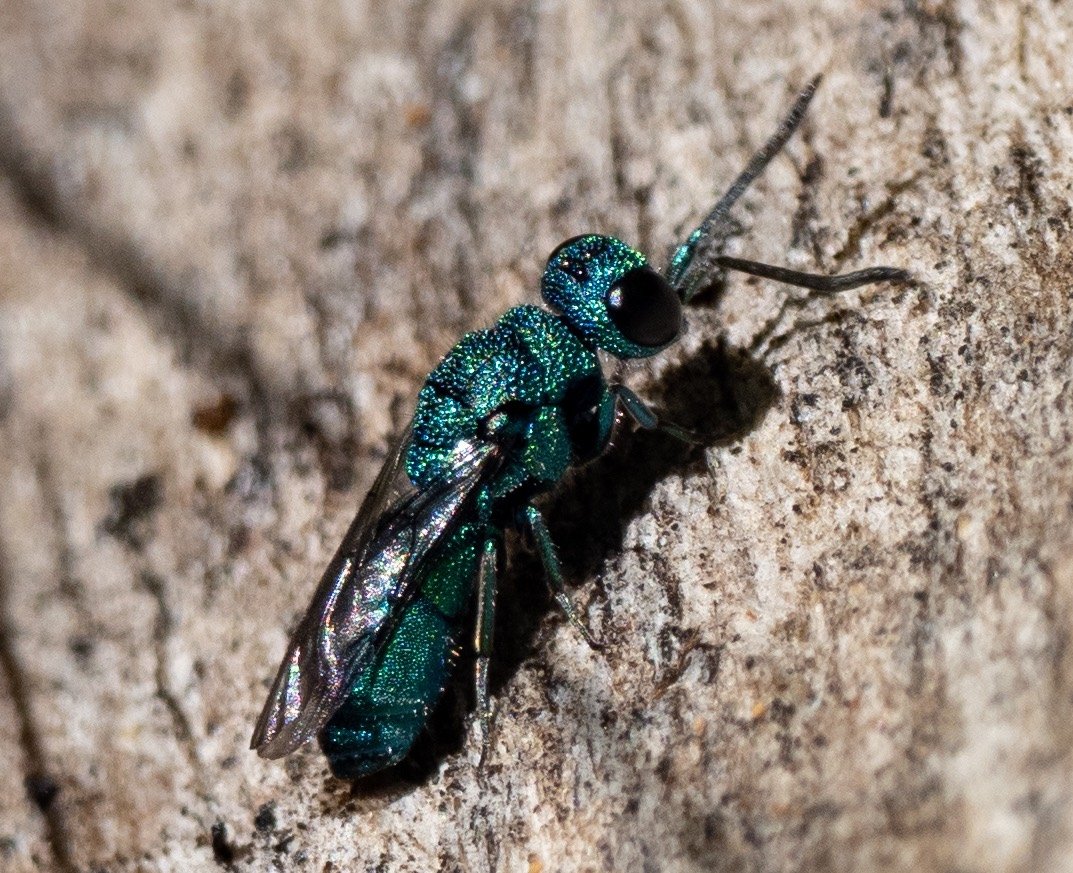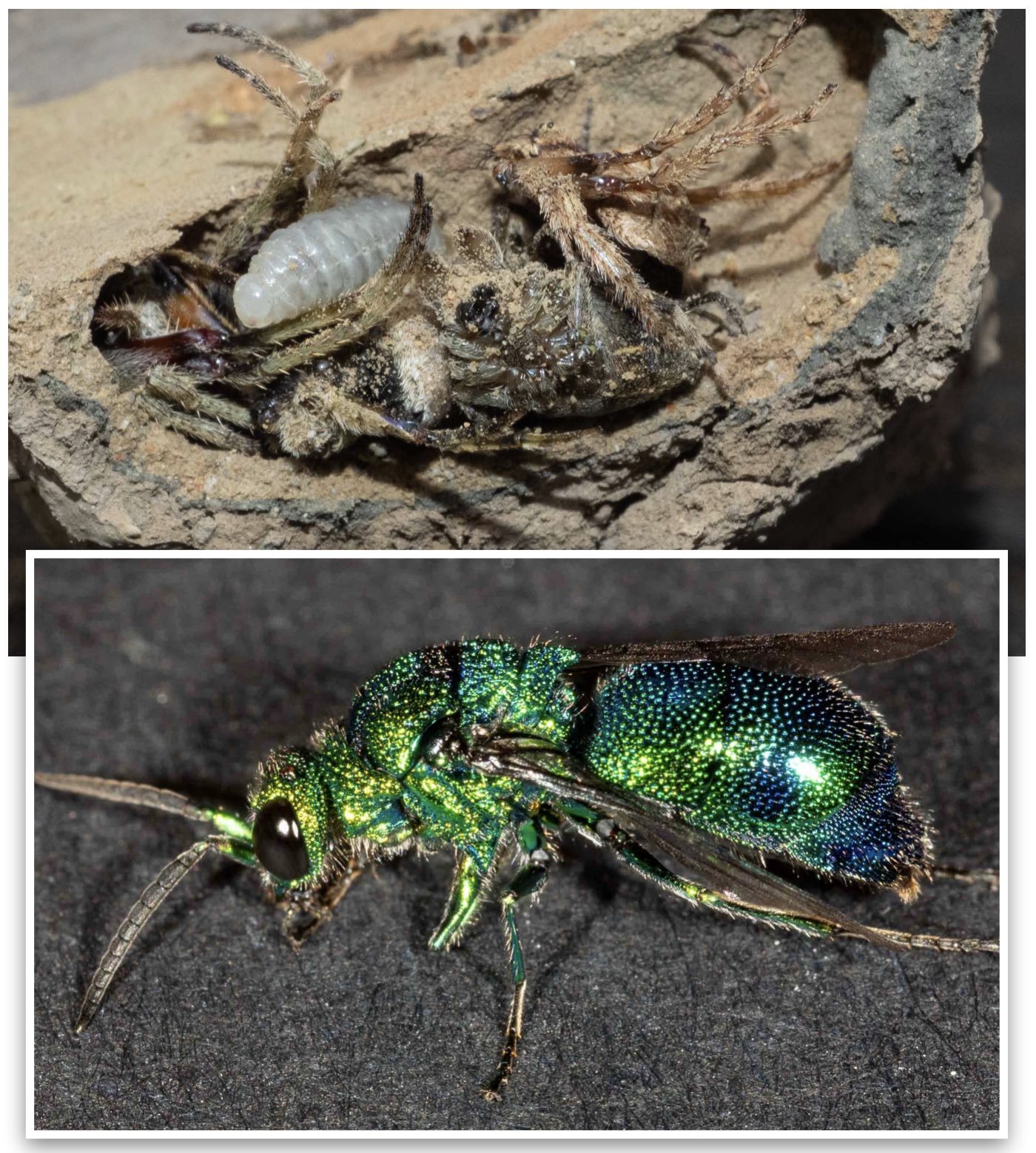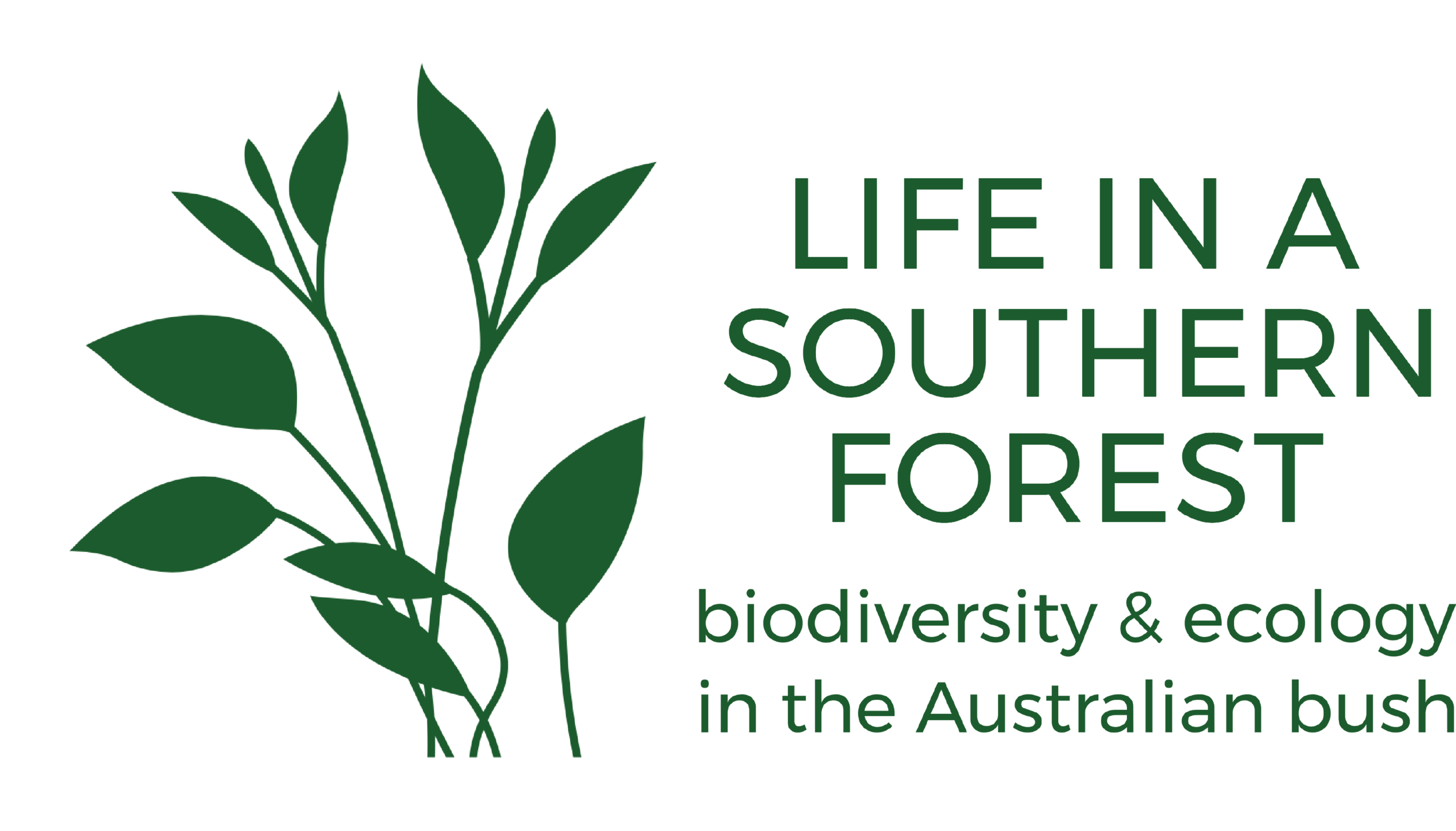
investigating a log, probably seeking a host
Solitary kleptoparasite of various wasps, including crabronids. The ‘cuckoo wasp’ consumes the egg or young larva and then the food cache before pupating in the safety of the stolen nest space.
Primeuchroeus

from inside the mud cell of a sphecid wasp
Five out of 19 cells in a massive mud-dauber nest gave rise to cuckoo wasps. The nest was collected on the north coast of NSW … neither the host nor parasite is a species we know here, although both are reportedly widespread across Australia. Cuckoo wasps are solitary kleptoparasites … they consume the young host and then the food cache. In this case, the paralysed spiders. The parasite then spins its own cocoon within the protective cell of the mud nest.
Chrysis lincea.
[host – Sceliphron laetum: SPHECIDAE]
[for the full story see my 2022 blog ‘Wasp forensics’]


